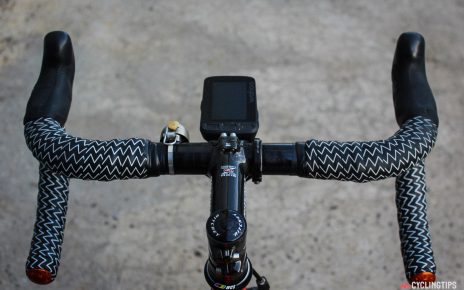It’s 8 feet wide and 4 miles long, and it leads, according to its hundreds of fans, directly into the future.
It also leads directly to a grim prison on one side or to a pungent oil refinery on the other, depending on which way you’re pedaling on the brand-new bicycle path on the Richmond-San Rafael Bridge.
The path, six years in the planning, opened Saturday morning and hundreds of cyclists — not only the spandex kind but the cut-off jeans kind — showed up to be among the first to work up a sweat getting across the 63-year-old bridge.
“I know it’s controversial,” said cyclist Peter Thelin, president of the Point Richmond Neighborhood Association. “I think there should be transportation alternatives. I sympathize with drivers in traffic, but if you installed another lane for cars it would fill up with cars.”
What the path filled up with Saturday was bicyclists on four-figure, carbon-fiber dream machines light enough to pick up with a pinky, bicyclists on garage-sale clunkers, bicyclists with political agendas, bicyclists with picnics in backpacks, bicyclists with bells that tinkled in the thick morning fog, bicyclists towing dogs in trailers and at least one cyclist who was one wheel short of being a bicyclist.
“I think I’m allowed,” said Jim Sowers of Oakland, who was riding a unicycle. “It’s a cycling path and I’m a cyclist. A unicyclist has to focus a lot more on the road than a bicyclist does. Hitting a bump is a lot more serious for us.”
Technically, the new bike path — also open to pedestrians — is a four-year “test project” to see if enough non-motorists use it. Motorists haven’t given up on dreams of their own to turn the bike lane into a third lane of traffic on the westbound upper deck, to go along with the new third traffic lane on the eastbound lower deck. Previously, the decks had two traffic lanes and one breakdown lane in each direction.

But Tarrell Kullaway, executive director of the Marin County Bicycle Coalition, told cyclists it was up to them to “make this test project permanent.”
“Get out and use it,” she told the crowd. “Show the naysayers.”
Whether hundreds of cyclists keep showing up will be closely watched by the Metropolitan Transportation Commission and others who will decide on the path’s fate.
“There’s a ton of people here on Day One,” said John Goodwin, a commission spokesman. “The question is how many will be here on Day Two.”
Margaret Norman of Berkeley, who couldn’t wait for the opening-day ceremony to end, was among scores of cyclists who pedaled to Marin County and back while the speeches were still going on.
“Every cyclist was grinning ear to ear, all the way across,” she said. “We have to get around without using fossil fuels. That has to be our priority now. Bicycles are an awesome way to do it.”
Correction: The name of the Marin County Office of Education was misstated in an earlier version of this article.
Most cyclists said the new path across the prosaic Richmond-San Rafael bridge was nothing like crossing the Golden Gate Bridge, the gold standard of bridge cycling. On the other hand, it beat the new bike path on the eastern half of the Bay Bridge, which leads from the even more prosaic Port of Oakland to a dead end on Yerba Buena Island.
The new path, with a blue line running down the middle, is separated from the two westbound traffic lanes by a row of gray traffic barriers. Getting across can take some doing. Wind and fog can challenge cyclists, and the undulating path requires them to climb from water level to heights of 185 and 135 feet. From either of the bike path’s end points near the Chevron refinery on the east and San Quentin prison on the west, considerably more pedaling is required to reach such traditional cycling hot spots as a park, a bakery or a coffee bar.

But for most cyclists who showed up on opening day, the chance to pedal high above the northern part of San Francisco Bay was as good as it gets. And the free water bottles, bagels and goodie bags being handed out didn’t hurt.
Bike activist Nakari Syon grew up in Richmond, in the shadow of the refinery. Until Saturday, there was no practical way to get to the trails and parks of Marin County.
“My peers and I, we’d always dreamed of having this access to Marin,” said Syon, who doesn’t drive. “It’s just so exciting that now I can bring 15 or 20 cyclists across the bridge and give them that experience.”
Among those not sharing that dream is Mary Jane Burke, superintendent of the Marin County Office of Education, who said 1,500 district teachers cross the bridge every day to get to work. She wants the bike lane opened to traffic.
“People cannot sustain hours of commuting to get to jobs they love,” Burke said.
But Kullaway said opening the bike lane to cars would only conjure up more cars.
“We have to move toward non-combustion engines in this world,” she said. “This is the future.”
San Francisco Chronicle staff writer Rachel Swan contributed to this report.
Steve Rubenstein is a San Francisco Chronicle staff writer. Email: srubenstein@sfchronicle.com Twitter: @SteveRubeSF


